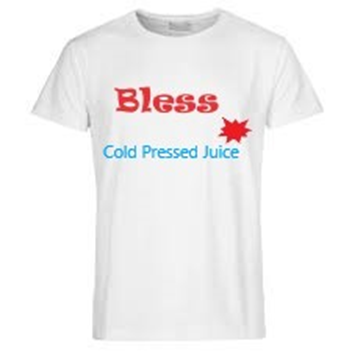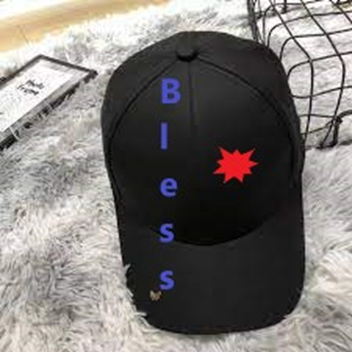Summary
Bless is a Hong-Kong based company that produces Cold Pressed Juice. The company aims to promote a healthy lifestyle by focusing mainly on a natural diet. They utilize the skills of experienced nutritionists and dieticians to produce various types of nutritious cold-pressed juices. Bless also offers its customers an excellent experience through well-organized delivery systems, a variety of healthy products, and a good customer interface. The company stands apart from its competitors by producing healthy juices that contain essential nutrients such as vitamins and minerals. The Cold Pressed Juice produced by the company is solved in several retail outlets in Hong Kong.
PEST Analysis
Social Factors
This analysis aspect describes the effects of social conditions and trends on the business performance of Bless. First is the shift in consumer preferences and purchasing behavior. Bless has an opportunity for growth since most consumers are pushing for a healthy diet (Boryso, 2021). This change will cause a rise in demand for organic, nutritious foods and drinks. The education level of society impacts the quality of the workforce. China’s population is highly educated; hence, Bless can hire skilled employees who produce great results. Moreover, according to several Mintel reports, during a pandemic, six out of 10 consumers think that they want to drink something more natural and organic (Magill, 2021). Therefore, Bless’s marketing campaign should conform to the demands of people in authority.
Economic Factors
Bless cold-pressed juices are distributed to various places in China and the World. These places have diverse cultures, customs, desires, and tastes. Bless has changed and improved the handling of its products by producing new flavors to accommodate these consumers. Moreover, consumer disposable income is another factor that Bless should consider. The income of many households in China has constantly risen over the years. This rise is an opportunity for Bless to expand its market by using a differentiated marketing campaign (Camilleri, 2018). There is also a high GDP growth rate which signals increasing demand in the economy.
Technological Factors
The advancement in technology is causing companies to change their business models. Bless has utilized technology by increasing its presence on the internet. Consumers can view and purchase their products online without physically having to visit their shops. Also, digitizing their processes can ensure transparency and avoid corruption in the local economy. However, the company needs to access its infrastructure to determine whether it can adapt to the fast pace of technological growth.
Political Factors
Political factors are crucial for any company when making investment decisions. Various established laws may stop Bless from distributing drinks. These laws range from tax, accounting, and internal marketing to labor laws that inhibit production and supply. However, Bless has a unique opportunity to increase its production since the government is now finding ways to improve the safety of the people by banning the sale of unhealthy foods and drinks.
SWOT Analysis
Strengths
The first strength of Bless is the dominant market share. It is one of the largest Cold Pressed juice companies in China. The company owns several retail outlets, and its products are present in various retail units throughout Hong Kong. Another merit is the diversified product portfolio with a wide range of nourishing cold-pressed juices. These drinks are exceptional since they promote a healthy lifestyle and contain minerals, vitamins, and tea infusions.
Weaknesses
The most notable weakness of Bless is the limited presence on social media. The company has not utilized various social media platforms such as Facebook and Twitter to improve product awareness and attract new customers. Also, the business operation of Bless largely depends on its suppliers, who deliver the raw materials required to produce the drinks. Therefore, any interruption in the supply chain could drastically impact the business.
Opportunities
One of the greatest opportunities for Bless is the change in consumer trends towards consuming healthy foods and drinks. This trend is beneficial for Bless since the company promotes healthy lifestyles by producing healthy and nutritious drinks. Therefore, the company can benefit from the online delivery of various drinks. A lot of people are beginning to enjoy ordering drinks online and receiving them at their doorsteps.
Threats
Bless is facing substantial threats from other cold-pressed juice companies. These companies produce products with similar value to the customers hence drawing some consumers away from Bless. The company also faces a threat from economic factors, including disposable income and affordability. The COVID-19 quarantine and lockdown measures restrict people to their own homes (Soft drinks: quarterly statement Q3, 2021). This restriction results in sales decline since most people choose to spend less.
Customer Analysis
Many factors attract customers around the world to a business and brand, such as product function, product suitability, and product value. The primary customers of Bless include wholesale and distributors, retail outlets, and foodservice customers. The company offers incentives such as promotions and product placement fees to its customers to increase product awareness since most of its products are not sold directly to the consumers.
Competitor Analysis
There are several cold-pressed juice companies in Hong Kong. The main competitors of Bless include Genie Juicery, Catch Juicery, the Hong Kong Juice Co, and Joe & The Juice. Bless’s products are usually in the lead in product quality. However, they compete with other producers based on product variety, price, and distribution. Many of its competitors sell similar products at reduced prices, which attracts more customers to their products.
Objectives
- To increase brand awareness and attention by helping people recognize it across media;
- To generate interest in the company’s products by distributing Bless’s branded merchandise all over Hong Kong;
- To create a desire within the consumers to increase purchases and loyalty.
Strategy
Segmentation- Target Audience
The target audience is the population aged between 18 and 50 years. This group comprises university & college students, the working class, and the youth who prefer to lead a healthy lifestyle and consume healthy foods and drinks (Duralia, 2018). This audience also has a large presence on social media platforms, including YouTube, Twitter, Facebook, and Instagram. Furthermore, these people live or work close to the urban area.
Positioning
Bless Cold Pressed Juice is positioned as the best non-alcoholic beverage with a lot of nutritional benefits. The product helps in maintaining a healthy diet while at the same time providing the consumer with a very tasty drink. The presence of essential vitamins and minerals in the company’s drinks makes them stand apart from the competition (Anani-Bossman and Mudzanani, 2021). The products also come in a wide range of sizes and prices; hence they are affordable to the consumers compared to other drinks. Discounts are also provided for large purchases, and there are frequent gift hampers to be won by the customers. Furthermore, the service delivery is outstanding, and the employees are dedicated to ensuring customer satisfaction.
Branded Merchandise Idea
Clothing and accessories are the best options for branded merchandising since customers walk with customized bags, branded T-shirts, or custom-made hats that advertise the brand. For Bless’s non-food line extension, I am developing high-quality branded casual wear, which the company will distribute to existing customers and any interested individuals. The clothes will act as promotional products and ensure familiarity and brand awareness. The customized clothes will have an eye-catching name of the company and will be available in various sizes.


Bless will offer the clothing for free to customers who make large purchases and those known to frequent the various retail outlets. This offer is an excellent idea because when people notice their family member or a friend wearing branded clothes, they are more likely to inquire more about the product (Juska, 2017). Thus, customers will be encouraged to make large purchases or frequently purchase the products to increase their chances of winning.
Tactics
There are various market communication tactics used to build a long-lasting relationship between the seller and the consumer. The successful execution of Bless’s non-food-line extension will be based mainly on the AIDA model. This model effectively describes the process undergone by a buyer when purchasing products or services (Bruhn and Schnebelen, 2017). Hence, it is useful when communicating to consumers at different stages using various platforms.

To create awareness of Bless’s new merchandise, we will run a public campaign three months to the launch date in areas where the consumers are mostly located. Creating advertisements and placing them in various locations in Hong Kong will guarantee attention is drawn to the product. Furthermore, to generate interest, we will use direct mail offering free merchandise to the first group of potential customers.
This innovative and unexpected offer, without any doubt, will compel people to come and check whether they can walk away with high-quality casual clothes for free. Therefore, to create desire before beginning the launch, we will run many types of advertisements through social media and local press (Kang and Kim, 2017). Finally, the company will position a call to action on Facebook, Twitter, and Bless’s website.
Approaches and Tools to be Used
Twitter is a good marketing tool because of the speed at which information is shared on its platform. Twitter ads will target those audiences who have a busy social life (Khikhadze, 2020). We will utilize promotional videos and pictures which are uniquely designed to captivate the viewer’s attention and deliver the message in a simple format. We will also attach hashtags to each post to enable customers to find products easily.
Weekly Giveaway
The company will be giving away the products as gifts every week. The giveaways will be classified according to prices and quality. We will give the gifts to customers who tell us why Bless’s products interest them and offer useful improvement advice. The competition will begin on Monday and winners will be declared every Sunday. A total of 10 winners will be selected, and we will give each a gift based on their performance.
Daily Posts
We will increase Bless’s social media presence by frequently interacting with consumers and producing engaging posts daily. These posts will vary and include promotional videos, pictures, and company updates that are visually captivating and attract attention easily. Visually attractive pages normally attract young audiences and reflect current social media trends (Mkhize and Ellis, 2020). The posts are effective since they save on cost and assist in managing the relationship between the brands and customers.
Celebrity and Influencer Endorsement
This strategy involves hiring a social media influencer who will expand the advertisement to a bigger scale. By utilizing the relationships created by influencers, we will create a brand community where customers who are loyal to the brand can share information, ideas, and experiences. Considering the impact of the influencers, we will collaborate with five Instagram celebrities for one month. The sponsored posts will guide the customers toward the company’s website to access our products.
Action Plan
The marketing communication plan will take place for about three months, starting from December and ending in February, since it is the estimated time required to reach the target audience and ensure the results are achieved.
- Period: 1st December 2021 to 31st December 2021
During this month, the company will improve its social media presence and utilize it to promote the products. It will also start posting captivating posts daily on the platforms. We will do this campaign to ensure we can reach our potential customers and interact with the existing ones.
- Period: 1st January 2022 to 31st January 2022
During this month, Bless Company will be offering giveaways every week, and the daily posts on social media will continue. The giveaways will encourage existing customers to participate actively in the company’s social media platforms and eventually foster loyalty to the brand and increase purchases.
- Period: 1st February 2022 to 28th February
During this month, the company will collaborate with various celebrities and influencers while continuing with the daily posts on social media. The influencers will assist the company reaches diverse customers who initially may not have been aware of the company’s products.
Control and Evaluation
An evaluation of the effectiveness of the plan will be carried out every month until the campaign is completed. We will closely check the results to determine whether the plan has successfully fulfilled the set objectives. We will acquire these results by tracking the number of sales, checking social media traffic, and identifying new customers. A survey will also be conducted to check whether the brand awareness campaign was successful.
Reference List
Anani-Bossman, A. and Mudzanani, T. E. (2021) ‘Analysing the Influence of Public Relations in the Integrated Marketing Communication Process’, in Anning-Dorson, T. et al. (eds.) Marketing communications in emerging economies, volume I. Cham: Springer International Publishing, pp. 105-136.
Boryso, D. (2021) What’s working in soft drinks, electronic data file, WARC Reports. Web.
Bruhn, M. and Schnebelen, S. (2017) ‘Integrated marketing communication–from an instrumental to a customer-centric perspective, European Journal of Marketing, 51(3), pp. 464-489. Web.
Camilleri, M. A. (2018) Travel marketing, tourism economics, and the airline product: an introduction to theory and practice. Cham: Springer.
Duralia, O. (2018) ‘Integrated marketing communication and its impact on consumer behavior’. Studies in Business and Economics, 13(2), pp. 92-102. Web.
Juska, J. M. (2017) Integrated marketing communication: Advertising and promotion in a digital world. London: Routledge.
Kang, J. M. and Kim, J. (2017) ‘Online customer relationship marketing tactics through social media and perceived customer retention orientation of the green retailer’, Journal of Fashion Marketing and Management, 21, pp. 298-316. Web.
Khikhadze, L. (2020) ‘Advantages of integrated marketing communications and synergic effect in global business development, in Kozak, Y. and Shengelia, T. (eds.) World economy and international economic relations, volume 3. Kyiv: Centre of Educational Literature, pp. 26-28.
Magill, N. (2021) Consumer attitudes towards natural and organic food – Ireland, Mintel Consumer Report. Web.
Mkhize, S. and Ellis, D. (2020) ‘Creativity in a marketing communication to overcome barriers to organic produce purchases: the case of a developing nation’, Journal of Cleaner Production, 242. Web.
Soft drinks: quarterly statement Q3 (2021), electronic data file, Euromonitor International. Web.